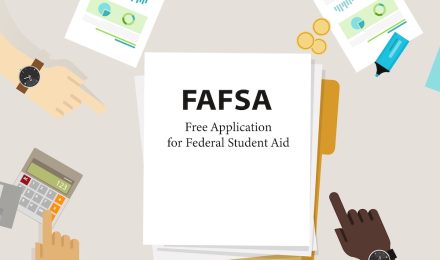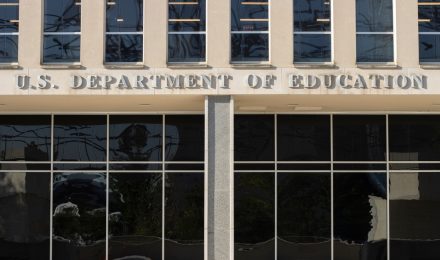Student loan repayment policies in the United States are in the midst of major transformation. For years, income-driven repayment (IDR) plans have offered borrowers the chance to align their monthly payments with earnings, with the possibility of loan forgiveness after a set number of years. The newest version, the Saving on a Valuable Education (SAVE) Plan, represented the most generous IDR structure to date.
By capping payments at a lower share of discretionary income and eliminating interest growth for many borrowers, SAVE quickly became popular. But as of 2025, its future is uncertain. Budget constraints, political debates, and new legislation are reshaping IDR options in ways that will affect millions of current and future borrowers.
The Rise of IDR
The federal government introduced income-driven repayment as a way to prevent defaults and make repayment more manageable. Under IDR, borrowers typically pay 10–20% of discretionary income, with forgiveness available after 20 or 25 years. For low-income borrowers, this often meant payments of $0, while those with higher incomes benefited from payments that scaled with earnings rather than fixed loan amounts.
Over time, however, the complexity of multiple IDR programs—Income-Based Repayment (IBR), Pay As You Earn (PAYE), Revised Pay As You Earn (REPAYE), and others—created confusion. SAVE was designed to simplify this landscape while offering more generous terms.
What Made SAVE Different
SAVE introduced several borrower-friendly features:
- Payments for undergraduate loans capped at 5% of discretionary income (down from 10% under earlier plans).
- No unpaid interest accumulation: if a borrower’s payment did not cover monthly interest, the government absorbed the difference.
Together, these provisions significantly reduced monthly obligations and helped prevent balances from ballooning over time. For many borrowers, SAVE represented the most affordable repayment plan ever available.
Legislative Challenges
Despite its popularity, SAVE has faced political pushback. Critics argue that the plan is too costly for taxpayers and may encourage overborrowing by signaling that repayment burdens will be lighter. The 2025 budget law introduced measures to restrict eligibility and tighten cost controls.
Key proposals include limiting SAVE’s availability to new borrowers only, phasing out certain benefits for higher-income participants, and reconsidering the timeline for forgiveness. While existing enrollees are unlikely to lose benefits abruptly, the trajectory suggests that SAVE in its original form may not remain intact.
Alternative IDR Options
As policymakers scale back SAVE, attention is turning to revised versions of older IDR plans. Some proposals would consolidate repayment into a single standard IDR plan, with features less generous than SAVE but simpler than the patchwork of older options. Others advocate for maintaining SAVE alongside a more limited alternative, allowing borrowers to choose based on circumstances.
Whatever the outcome, the direction is clear: repayment structures will continue to emphasize affordability and default prevention, but with tighter budgetary limits than SAVE originally envisioned.
Implications for Borrowers
The future of IDR has significant consequences for students and graduates:
- Low-income borrowers may still see reduced payments, but not always as low as SAVE’s 5% threshold.
- Middle-income borrowers could shoulder larger monthly obligations if SAVE benefits are scaled back.
- Those counting on long-term forgiveness may face extended timelines, requiring careful financial planning.
These shifts could also influence borrowing behavior. If students perceive repayment options as less generous, they may be more cautious about taking on federal debt, especially at the graduate level.
Equity and Access Concerns
One of SAVE’s strongest arguments was its role in promoting equity. By lowering payments for those with the least income, it offered relief to first-generation students, borrowers of color, and others disproportionately affected by student debt. Rolling back these benefits risks reinforcing existing inequalities, particularly if alternative repayment plans are less responsive to the realities of low-income households.
At the same time, some policymakers argue that SAVE’s design placed too much emphasis on forgiveness decades down the road, rather than addressing the root causes of high borrowing—namely, tuition inflation and limited grant aid. This debate underscores the tension between short-term borrower relief and long-term structural reform.
Institutional Reactions
Colleges and universities are closely watching IDR reforms. Generous repayment protections like SAVE can indirectly support institutional enrollment, since students feel more comfortable borrowing. If repayment plans become less forgiving, some institutions may face enrollment declines, particularly in high-cost programs where borrowing is essential.
Professional schools such as law and medicine may be especially affected. Students weighing large debt burdens will now need to consider not only tuition but also the possibility of stricter repayment terms.
Preparing for Change
For borrowers, the key is to remain proactive. Staying informed about legislative updates, communicating with loan servicers, and exploring multiple repayment scenarios will be crucial. Borrowers should also evaluate whether consolidation or refinancing makes sense in anticipation of shifting IDR structures.
Financial counselors advise modeling repayment under several possible plans. This can help borrowers understand how monthly obligations might change and what forgiveness pathways remain realistic. For those in public service careers, tracking how IDR changes intersect with Public Service Loan Forgiveness (PSLF) is especially important.
The Bigger Policy Picture
The uncertainty surrounding SAVE highlights a broader truth: repayment reform alone cannot solve the student debt crisis. While IDR provides essential protections, it does not reduce the initial cost of higher education. Without broader changes in tuition pricing, grant aid, and institutional accountability, repayment plans will continue to serve as a safety net rather than a cure.
As Congress debates the future of IDR, advocates emphasize that reforms must balance fiscal responsibility with fairness. For many borrowers, repayment flexibility is the difference between financial stability and default. Striking this balance will define the trajectory of federal student aid in the coming decade.
Conclusion
Income-driven repayment has always been central to the U.S. student loan system, and SAVE marked a turning point with its generous terms. Yet in 2025, the political and fiscal realities are forcing a reassessment. While borrowers can expect continued access to income-based protections, the most expansive features of SAVE are unlikely to survive in their current form.
For students and graduates, this means preparing for a repayment environment that offers affordability but demands more caution. By staying informed, planning carefully, and exploring alternatives, borrowers can adapt to the evolving landscape while still pursuing educational and career goals.
References
- Federal Student Aid – Income-Driven Repayment Plans
- The College Investor – Changes to SAVE and IDR
- Brookings Institution – Student Loan Policy Analysis
Student loan repayment policies in the United States are in the midst of major transformation. For years, income-driven repayment (IDR) plans have offered borrowers the chance to align their monthly payments with earnings, with the possibility of loan forgiveness after a set number of years. The newest version, the Saving on a Valuable Education (SAVE) Plan, represented the most generous IDR structure to date.
By capping payments at a lower share of discretionary income and eliminating interest growth for many borrowers, SAVE quickly became popular. But as of 2025, its future is uncertain. Budget constraints, political debates, and new legislation are reshaping IDR options in ways that will affect millions of current and future borrowers.
The Rise of IDR
The federal government introduced income-driven repayment as a way to prevent defaults and make repayment more manageable. Under IDR, borrowers typically pay 10–20% of discretionary income, with forgiveness available after 20 or 25 years. For low-income borrowers, this often meant payments of $0, while those with higher incomes benefited from payments that scaled with earnings rather than fixed loan amounts.
Over time, however, the complexity of multiple IDR programs—Income-Based Repayment (IBR), Pay As You Earn (PAYE), Revised Pay As You Earn (REPAYE), and others—created confusion. SAVE was designed to simplify this landscape while offering more generous terms.
What Made SAVE Different
SAVE introduced several borrower-friendly features:
- Payments for undergraduate loans capped at 5% of discretionary income (down from 10% under earlier plans).
- No unpaid interest accumulation: if a borrower’s payment did not cover monthly interest, the government absorbed the difference.
Together, these provisions significantly reduced monthly obligations and helped prevent balances from ballooning over time. For many borrowers, SAVE represented the most affordable repayment plan ever available.
Legislative Challenges
Despite its popularity, SAVE has faced political pushback. Critics argue that the plan is too costly for taxpayers and may encourage overborrowing by signaling that repayment burdens will be lighter. The 2025 budget law introduced measures to restrict eligibility and tighten cost controls.
Key proposals include limiting SAVE’s availability to new borrowers only, phasing out certain benefits for higher-income participants, and reconsidering the timeline for forgiveness. While existing enrollees are unlikely to lose benefits abruptly, the trajectory suggests that SAVE in its original form may not remain intact.
Alternative IDR Options
As policymakers scale back SAVE, attention is turning to revised versions of older IDR plans. Some proposals would consolidate repayment into a single standard IDR plan, with features less generous than SAVE but simpler than the patchwork of older options. Others advocate for maintaining SAVE alongside a more limited alternative, allowing borrowers to choose based on circumstances.
Whatever the outcome, the direction is clear: repayment structures will continue to emphasize affordability and default prevention, but with tighter budgetary limits than SAVE originally envisioned.
Implications for Borrowers
The future of IDR has significant consequences for students and graduates:
- Low-income borrowers may still see reduced payments, but not always as low as SAVE’s 5% threshold.
- Middle-income borrowers could shoulder larger monthly obligations if SAVE benefits are scaled back.
- Those counting on long-term forgiveness may face extended timelines, requiring careful financial planning.
These shifts could also influence borrowing behavior. If students perceive repayment options as less generous, they may be more cautious about taking on federal debt, especially at the graduate level.
Equity and Access Concerns
One of SAVE’s strongest arguments was its role in promoting equity. By lowering payments for those with the least income, it offered relief to first-generation students, borrowers of color, and others disproportionately affected by student debt. Rolling back these benefits risks reinforcing existing inequalities, particularly if alternative repayment plans are less responsive to the realities of low-income households.
At the same time, some policymakers argue that SAVE’s design placed too much emphasis on forgiveness decades down the road, rather than addressing the root causes of high borrowing—namely, tuition inflation and limited grant aid. This debate underscores the tension between short-term borrower relief and long-term structural reform.
Institutional Reactions
Colleges and universities are closely watching IDR reforms. Generous repayment protections like SAVE can indirectly support institutional enrollment, since students feel more comfortable borrowing. If repayment plans become less forgiving, some institutions may face enrollment declines, particularly in high-cost programs where borrowing is essential.
Professional schools such as law and medicine may be especially affected. Students weighing large debt burdens will now need to consider not only tuition but also the possibility of stricter repayment terms.
Preparing for Change
For borrowers, the key is to remain proactive. Staying informed about legislative updates, communicating with loan servicers, and exploring multiple repayment scenarios will be crucial. Borrowers should also evaluate whether consolidation or refinancing makes sense in anticipation of shifting IDR structures.
Financial counselors advise modeling repayment under several possible plans. This can help borrowers understand how monthly obligations might change and what forgiveness pathways remain realistic. For those in public service careers, tracking how IDR changes intersect with Public Service Loan Forgiveness (PSLF) is especially important.
The Bigger Policy Picture
The uncertainty surrounding SAVE highlights a broader truth: repayment reform alone cannot solve the student debt crisis. While IDR provides essential protections, it does not reduce the initial cost of higher education. Without broader changes in tuition pricing, grant aid, and institutional accountability, repayment plans will continue to serve as a safety net rather than a cure.
As Congress debates the future of IDR, advocates emphasize that reforms must balance fiscal responsibility with fairness. For many borrowers, repayment flexibility is the difference between financial stability and default. Striking this balance will define the trajectory of federal student aid in the coming decade.
Conclusion
Income-driven repayment has always been central to the U.S. student loan system, and SAVE marked a turning point with its generous terms. Yet in 2025, the political and fiscal realities are forcing a reassessment. While borrowers can expect continued access to income-based protections, the most expansive features of SAVE are unlikely to survive in their current form.
For students and graduates, this means preparing for a repayment environment that offers affordability but demands more caution. By staying informed, planning carefully, and exploring alternatives, borrowers can adapt to the evolving landscape while still pursuing educational and career goals.







